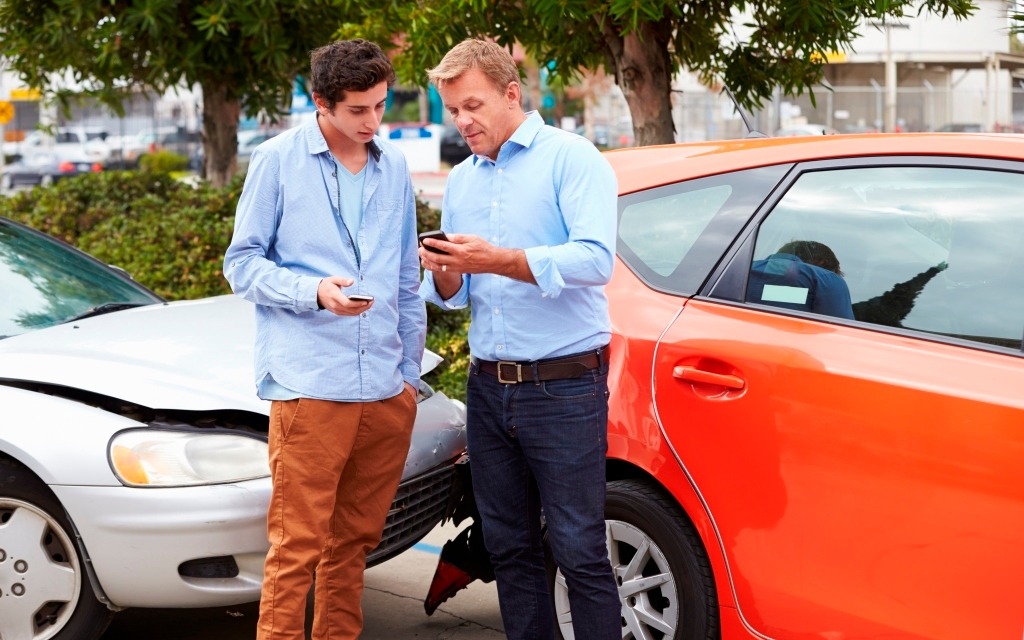Joint Report: are you familiar with the mobile app?
This advertorial is brought to you by Groupement des assureurs automobiles(GAA)
If you’re in a fender bender on the road, first make sure you’re safe. You don’t need to call 911 if no one’s injured. Just describe the circumstances of the accident by filling in a Joint Report. Here’s how.
- Also: Finding The Right Car Insurance
- Also: Auto Insurance: Advice For Buying Insurance And Avoiding Hassles
1. Joint Report app
You can download the “Joint Report” mobile app from the Google Play Store and App Store.
The app guides you through the process step by step, and helps you complete a Joint Report with the other driver involved.
It lets you:
- Create a profile ahead of time to complete the Joint Report more quickly in case of an accident.
- Enter the other driver’s licence data automatically using the bar-code scan function.
- Take two photos of each damaged vehicle.
- Enter each driver’s signature directly on screen.
- Send the Joint Report directly to the other drivers involved and to the respective insurers.
Good to know:
- The app lets you complete a Joint Report for up to three vehicles.
- You can also complete a Joint Report even if no other driver was involved in the accident. For example, if you hit a pole or noticed that your vehicle was damaged during your absence.
2. No app? Complete the hard copy of Joint Report
You’ve already downloaded the app? Excellent choice.
Keep a hard copy of the Joint Report in your vehicle anyway. To use the app, you need internet access and each driver must have an email address. And make sure your phone battery is charged!
The hard copy of the Joint Report allows you to collect all the information in order to file a claim with your insurer. It’s the best way not to leave anything out.
Do you have a copy of the Joint Report in your glove compartment? If not, you can order a copy of the Joint Report at no charge at infoinsurance.ca.
3. No hard copy? Exchange the following information
Caught off guard? Each driver can take a photo of the three following documents:
- Driver’s licence
- Vehicle registration
- Insurance certificate
These documents contain the information your insurer needs.
If you can’t access a camera, simply exchange the following information with the other driver:
- Name
- Postal address
- Phone number
- Driver’s licence number
- Vehicle registration
- Name of Insurer and insurance certificate
Then, contact your insurer to send the information.
4. Signing a Joint Report doesn’t mean you are liable for the accident.
Completing a Joint Report speeds up the claims process with insurers.
Insurers use the Joint Report to understand what happened in the accident. However, each driver’s liability is based on the various accident scenarios described in the Direct Compensation Agreement. Whether or not you complete a Joint Report changes nothing in terms of your liability.
If you disagree with the other driver about what really happened, you can mention this in the Joint Report app or on the hard copy.
5. What if the other driver refuses to cooperate?
As its name suggests, the Joint Report … is a ‘joint’ process.
If the other driver refuses to cooperate:
- Stay calm. Drivers are under no obligation to fill out a Joint Report. Insurers have other ways of establishing the circumstances of an accident.
- If you can, write down the other driver’s licence plate number.
- Then call your insurer as soon as possible.
If the other driver doesn’t stop his vehicle in case of an accident (or if this bad idea crosses your mind), it becomes a hit and run. This is a severe criminal offense severely punishable by law. Should this occur, note down the licence plate number of the vehicle and call the police. If possible, then take photos of the damage and quickly contact your insurer.







